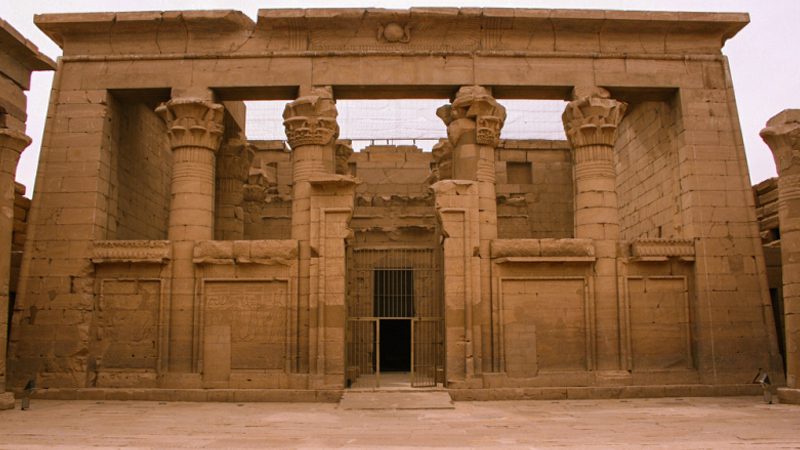Welcome to the mystical world of Egypt, where ancient wonders stand as testaments to a glorious past. In this article, we delve into the captivating history and cultural significance of the Temple of Kalabsha. Situated on the banks of the majestic Lake Nasser, this architectural marvel takes us on a journey back in time, providing a glimpse into the grandeur of ancient Egypt. Join us as we unlock the secrets of this remarkable temple and explore its historical and archaeological treasures.


Unveiling the Temple of Kalabsha
The Temple of Kalabsha, also known as the Temple of Mandulis, is an awe-inspiring structure that has stood the test for over two millennia. Built during the reign of Roman Emperor Augustus, it was dedicated to the Nubian sun god, Mandulis. We explore the temple’s architectural design, highlighting its impressive towers, hypostyle hall, and iconic sanctuary.
Historical Significance
We must understand its historical context to appreciate the Temple of Kalabsha truly. In this section, we delve into the Nubian civilization, the cultural exchange between Nubia and Egypt, and the role of Kalabsha as a strategic trading hub. Discover the fascinating stories and legends associated with this temple, including its relocation during the construction of the Aswan High Dam.
Architectural Marvels
The Temple of Kalabsha combines Egyptian and Roman architectural styles, making it a unique regional masterpiece. Explore the intricate carvings, colossal statues, and vibrant reliefs that adorn the temple’s walls. We also delve into the significance of the temple’s orientation and the celestial alignment observed during certain astronomical events.
Relocating the Temple
During the construction of the Aswan High Dam in the 1960s, the Temple of Kalabsha faced the imminent threat of submersion beneath the waters of Lake Nasser. However, through an international effort, the temple was successfully relocated to its present location on New Kalabsha Island. Learn about the monumental task of dismantling, moving, and reconstructing the temple, ensuring its preservation for future generations.
Cultural and Archaeological Treasures
The Temple of Kalabsha is a treasure trove of artifacts and inscriptions, shedding light on ancient Egypt’s religious and cultural practices. Discover the fascinating hieroglyphic inscriptions, the depiction of deities, and the symbols that offer insights into the Nubian belief system. We also discuss the significance of the temple’s proximity to other regional archaeological sites, creating a broader understanding of the ancient civilization.
Modern-day Significance and Tourism
Today, the Temple of Kalabsha is a testament to human ingenuity and perseverance. It is a popular tourist destination, attracting visitors from around the world who seek to immerse themselves in Egypt’s rich heritage. We explore the tourism potential of the temple, its accessibility, and the amenities available to visitors, ensuring a memorable experience for those who venture to this captivating site.
What is the historical significance of the Temple of Kalabsha?
The Temple of Kalabsha holds great historical significance, providing insights into the cultural exchange between ancient Nubia and Egypt. It was a vital trading hub dedicated to the Nubian sun god, Mandulis. The temple’s relocation during the construction of the Aswan High Dam adds another layer to its historical importance.
What architectural features make the Temple of Kalabsha unique
The Temple of Kalabsha showcases a blend of Egyptian and Roman architectural styles, making it a one-of-a-kind structure. Its impressive pylons, hypostyle hall, and sanctuary exhibit intricate carvings, colossal statues, and vibrant reliefs. The temple’s orientation and celestial alignments during specific astronomical events are also noteworthy.
How was the Temple of Kalabsha relocated during the construction of the Aswan High Dam?
The Temple of Kalabsha faced the threat of submersion beneath the waters of Lake Nasser during the construction of the Aswan High Dam. An international effort was undertaken to dismantle, move, and reconstruct the temple on New Kalabsha Island. This monumental task ensured the preservation of the temple for future generations.
What cultural and archaeological treasures can be found at the Temple of Kalabsha?
The Temple of Kalabsha houses many artifacts and inscriptions that offer insights into ancient Egypt’s religious and cultural practices. Visitors can marvel at hieroglyphic inscriptions, depictions of deities, and symbols that provide a deeper understanding of the Nubian belief system. Its proximity to other archaeological sites enhances its significance.
Is the Temple of Kalabsha easily accessible to tourists?
Yes, the Temple of Kalabsha is easily accessible to tourists. Located on New Kalabsha Island, it is reachable by boat from Aswan. Tourists can explore the temple’s architectural wonders, immerse themselves in its rich history, and witness the splendor of ancient Egypt. Visitor amenities, including guided tours, are available to enhance the experience.
What is the modern-day significance of the Temple of Kalabsha?
Today, the Temple of Kalabsha is a popular tourist attraction, drawing visitors worldwide. It allows people to connect with Egypt’s rich heritage and experience the magnificence of ancient architecture. The temple’s preservation highlights the importance of safeguarding our cultural heritage for future generations to appreciate and learn from.
Conclusion
The Temple of Kalabsha is a silent witness to the vibrant history of ancient Egypt. Its preservation and relocation test the commitment to safeguarding our cultural heritage. By exploring this remarkable temple, we gain a deeper understanding of the ancient civilizations that shaped today’s world. Let the mysteries of Kalabsha ignite your imagination as you embark on a journey through time, uncovering the stories and secrets of a bygone era.
